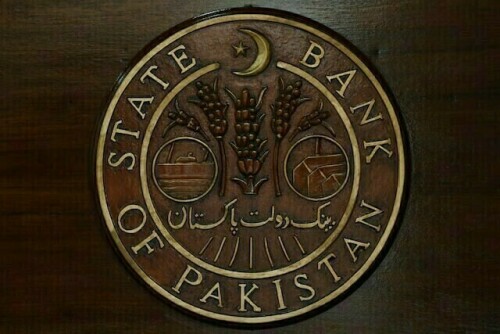State Bank of Pakistan Maintains Policy Rate at 11%
The Monetary Policy Committee (MPC) of the State Bank of Pakistan (SBP) has decided to maintain the policy rate steady at 11%, aligning with prevalent market forecasts. This decision was announced on Monday.
“During its session today, the MPC resolved to keep the policy rate unchanged at 11%,” the committee stated in an official release.
The MPC observed that the rise in inflation to 3.5% year-on-year (y/y) in May was consistent with projections, while core inflation experienced a slight decrease.
“Looking ahead, inflation is anticipated to rise and then stabilize within the target range throughout FY26,” the statement added.
The MPC also determined that economic expansion is progressively strengthening and is predicted to gain further impetus in the coming year, bolstered by the continuing effects of earlier policy rate reductions.
“However, the Committee acknowledged potential challenges to the external sector, including the persistent widening of the trade deficit and subdued financial inflows. Furthermore, some proposed budgetary measures for FY26 might exacerbate the trade deficit by increasing import activity. Therefore, the Committee considered today’s decision suitable for maintaining macroeconomic and price stability,” the statement clarified.
Market Expectations
Market analysts had widely anticipated the central bank would maintain the key policy rate at 11%.
“While domestic macroeconomic indicators have shown considerable improvement, notably in inflation and the external account, we believe the central bank is likely to adopt a cautious approach given emerging global risks and adjustments in domestic policy,” stated Arif Habib Limited (AHL) in their recent analysis.
AHL’s report suggested that while the domestic economic situation supports a move towards easing, recent geopolitical events have increased the risks.
“Rising tensions in key oil-producing regions have caused a sharp increase in global oil prices. Benchmark crude contracts like Brent, WTI, and Arab Light have increased by approximately 10-12% week-on-week, with daily increases exceeding 6% in recent readings.
“This presents direct and indirect inflationary risks for an oil-importing nation like Pakistan,” AHL emphasized.
Analysts at Topline Securities also anticipated that the MPC would maintain the status quo, noting that international crude oil prices had rebounded to $68-70 per barrel due to increased tensions in the Middle East and an anticipated US-China agreement.
“This necessitates a careful approach from policymakers, as oil price fluctuations have historically been a key driver of inflation.
“Additionally, major notifications, such as gas and electricity price adjustments, are expected before the start of the next fiscal year,” Topline stated in its report.
Similarly, a Reuters poll indicated that the SBP was expected to maintain its key interest rate at 11% due to geopolitical uncertainties, with analysts highlighting inflation risks stemming from rising global commodity prices.
“There remains an upside risk of rising global commodity prices because of geopolitical tensions, which could signal a return of inflationary pressures,” commented Ahmad Mobeen, a senior economist at S&P Global Market Intelligence.
Previous MPC Meeting
During its previous assembly, the MPC lowered the policy rate by 100 basis points to 11%, which was unexpected by the market.
The committee noted that inflation had decreased significantly in March and April, mainly due to reductions in administered electricity prices and a continued decline in food inflation.
“Core inflation also decreased in April, primarily reflecting favorable base effects amid moderate demand conditions.
“Overall, the MPC determined that the inflation outlook had further improved since the previous assessment,” the statement concluded.
Since the last MPC meeting, several significant economic developments have unfolded.
The rupee has experienced a depreciation of 0.6%, while petrol prices have increased by 2.3%.
Internationally, oil prices have surged by more than 25% since the last MPC gathering, currently hovering around $72 per barrel amid heightened regional tensions.
Pakistan’s headline inflation was recorded at 3.5% year-on-year in May 2025, an increase from April 2025’s reading of 0.3%, according to data from the Pakistan Bureau of Statistics (PBS).
Furthermore, Pakistan’s current account (C/A) showed a small surplus of $12 million in April 2025, compared to a significant surplus of $1.2 billion (revised) in the previous month, as per central bank data. On a year-on-year basis, the C/A decreased by 96% compared to a surplus of $315 million (revised) in the corresponding month last year.
Foreign exchange reserves held by the SBP increased by $167 million weekly, reaching $11.68 billion as of June 6.
Total liquid foreign reserves held by the nation were $16.88 billion. The net foreign reserves held by commercial banks amounted to $5.12 billion.



Comments (0)
No comments yet. Be the first to comment!
Leave a Comment